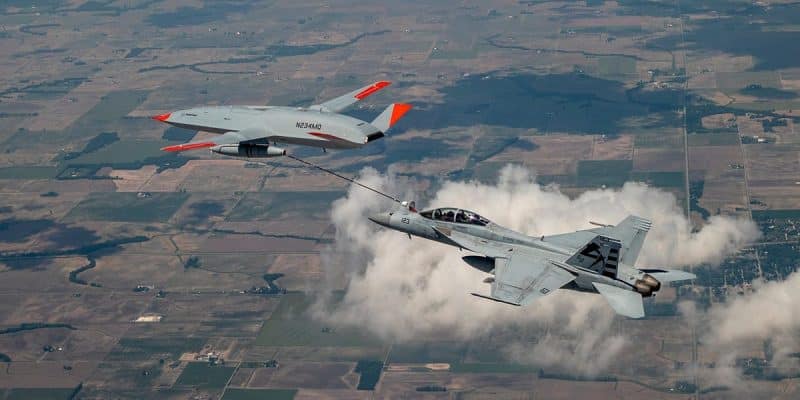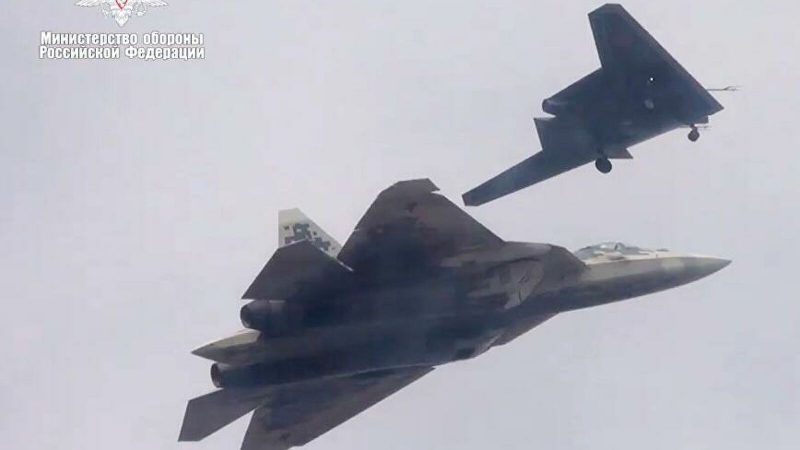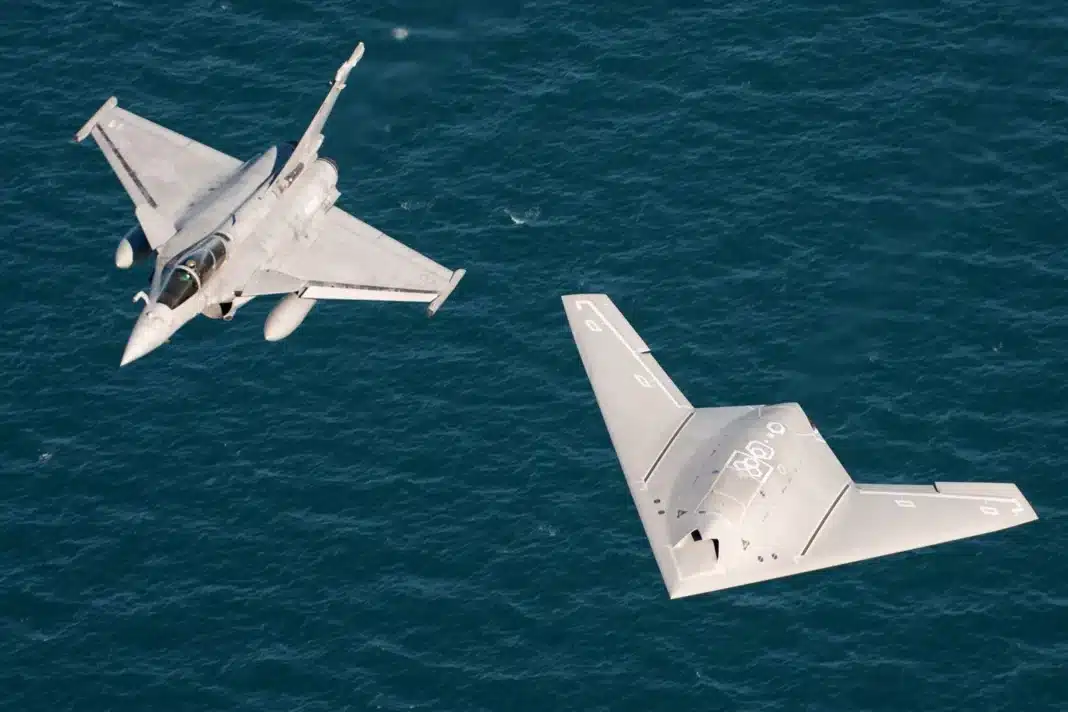The arrival of combat drones, these unmanned devices designed to carry out missions in place of fighter planes, is now particularly awaited. These will, in fact, constitute the real pivot of what is described as the 6th generation of combat aircraft, to which the American NGADs, as well as the European NGFs and Tempests, will belong.
If everyone anticipates this inevitable evolution, the way in which these drones will be used, and therefore the way in which they will be designed, still remains very divergent depending on the projects.
Thus, the Russians designed the S-70 Okhotnik-B, a 20-ton combat drone, whose performance, and certainly the price, brings it closer to a traditional combat aircraft. The MQ-25 Stingray developed by Boeing for US Navy aerial refueling missions, has a unit price of $150 million, higher than that of the F/A-18 E/F Super Hornet and the F-35C Lightning II, its two current onboard combat aircraft.
Conversely, the new programs developed, across the Atlantic, in this area, tend to design much more economical combat drones, such as Boeing's MQ-28 Ghost Bat designed in cooperation with Australia, which targets a unit price from $10 to $15 million, while the US Air Force announced, as part of the NGAD program, that it aimed to acquire a fleet of semi-expendable combat drones costing between a quarter and a third of the price of an F-35A, i.e. $22 to $30 million.
It is precisely in this direction that the US Navy, after the very expensive MQ-25 Stingray, now wants to move, with, ultimately, a profound upheaval of the fighter fleet embarked on board American aircraft carriers, as well as paradigms governing the operational and industrial aspects of combat aircraft.
In this section:
The US Navy wants $15 million combat drones that will only fly 200 hours
It is in this context that the new Collaborative Combat Aircraft, or CCA, program. This was detailed by Rear Admiral Stephen Tedford, who heads the Program Executive Office for Unmanned Aviation and Strike Weapons, or PEO (U&W), at the Navy League's annual Sea Air Space conference, more early this week.

According to him, the US Navy intends not to follow the trajectory of the MQ-25, but to turn towards combat drones much more economical, to accompany its Lightning II, its Super Hornet, and their successor, the future NGAD, which will not enter service before the end of the next decade.
More specifically, the US Navy aims to acquire combat drones whose unit price would not exceed $15 million. Above all, these devices must have very low implementation costs and no maintenance costs.
And for good reason, they will only have to fly, at best, 200 hours, before being used either as a target to attract enemy fire, or as an attack drone. There is no question, in these circumstances, of spending more than is strictly necessary to design and build drones with a limited lifespan.
And to add that ultimately, the US Navy aims for more than 60% of its fleet of combat aircraft to be made up of unmanned aircraft, operating in the service of piloted aircraft, but also independently. .
As for the US Air Force, the entry into service of the first of these drones is planned for the end of the decade, even if the capacities expected at this time will be lower than those targeted by the program, and will require , therefore, the supervision and control of a piloted device.
A coming revolution in the industrial and budgetary model of fighter aviation
The performance and operational capabilities of these future combat drones, regarding heavy drones like the S-70, Loyal Wingmen type drones, or consumable drones, like the Remote Carrier Expendable, have already been discussed in numerous articles published by the specialized press.

The implications on the industrial and budgetary model, which surround this development, have been much less so. And in the case of the model mentioned by the US Navy, but also by the US Air Force for the NGAD program, these are considerable.
Ownership costs three times lower for a combat drone compared to a combat aircraft

The rest of this article is for subscribers only
The Classic subscriptions provide access to
all articles without advertising, starting at € 1,99.
Newsletter subscription
Register for the Meta-Defense Newsletter to receive the
latest fashion articles daily or weekly


These drones, costing $15 billion, would have what carrying capacity/autonomy and detection/electronic warfare capacity?
The MQ-20 Avenger, which is priced at $15 million, can carry 3 tonnes of weapons, i.e. 1 kg in the hold.